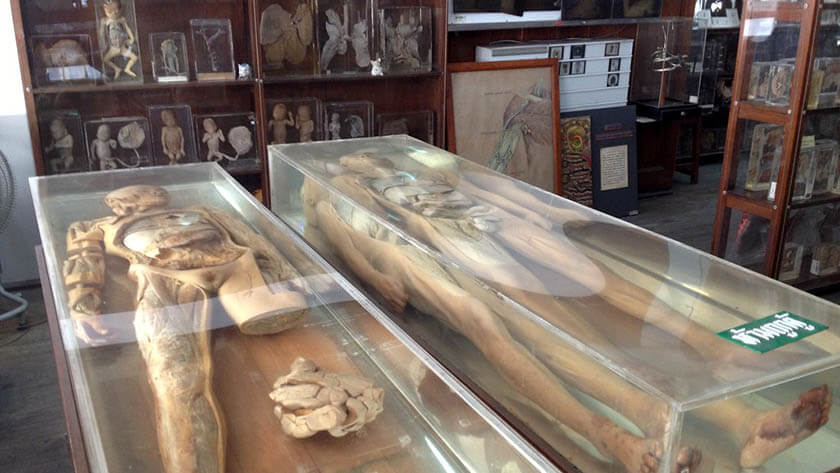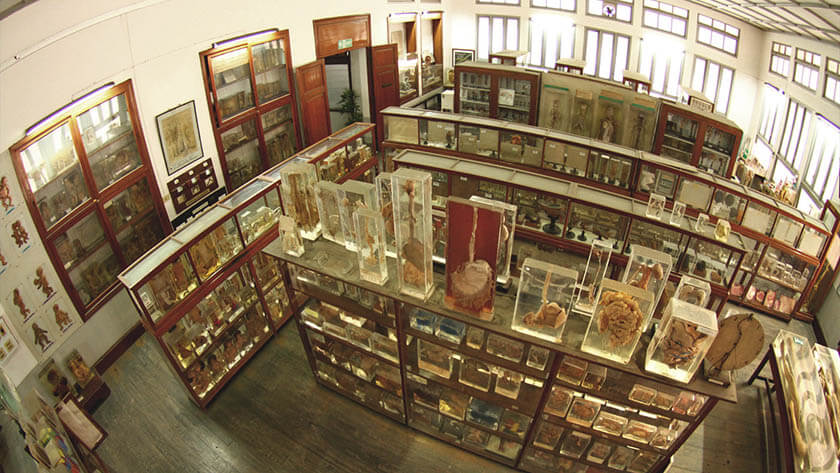A Museum Like No Other in Bangkok
This museum is not for the faint of heart! The Siriraj Medical Museum displays shocking and disturbing exhibits. However, if you’ve grown tired of pretty temples and busy shopping malls, this unique attraction offers something completely different. Moreover, you’ll have an unforgettable story to share when you return home.
What is the Siriraj Medical Museum?
The Siriraj Medical Museum sits within Bangkok’s oldest hospital grounds. Because of its disturbing displays, locals call it the ‘Museum of Death’. Furthermore, medical students and professionals still use it as a learning resource today.
The museum contains six separate medical collections. These include a Thai medicine history museum, the Ellis Pathological Museum, and the Congdon Anatomical Museum. Additionally, visitors can explore the Sood Sangvichien Prehistoric Museum, a Parasitology Museum, and the Songkran Niyomsane Forensic Medicine Museum. However, most tourists focus on the three creepiest sections: pathology, anatomy, and forensic medicine.

The Pathology Museum
The first room displays babies with genetic disorders. Each specimen sits preserved in formaldehyde. Although disturbing, they look unreal enough to keep your scientific curiosity alive. Therefore, most visitors can handle this section without too much distress.
The Parasitology Museum
This room focuses on parasites and their effects on human organs. Most displays seem fairly ordinary. However, you’ll also see incredibly long tapeworms and a 35kg human testicle affected by elephantiasis. Additionally, the museum displays plastic snakes, spiders, and parasites in old glass cases.
The Forensic Museum
Things become intense in the Songkran Niyomsane Forensic Medicine Museum. This section shows preserved bodies of accident victims and murderers. Most notably, it displays the dried body of Si Ouey, Thailand’s first known serial killer. He murdered and ate more than 30 children during the 1950s.
The museum keeps his body standing in a glass booth. Officials claim this display warns people against violent crimes. Because of his crimes, Si Ouey became a Thai bogeyman. Parents still use his name to scare misbehaving children: ‘Behave yourself or Si Ouey will come for you!’

The Anatomical Museum
The Congdon Anatomical Museum occupies the next building. Creaky old stairs take you to the third floor. Therefore, you feel like you’re traveling back in time. Faded portraits and dark hallways add to this old-world atmosphere.
Rows of glass and wooden cabinets line the walls. These contain skeletons and dissected bodies of adults and children. Body parts and genetic anomalies float in formaldehyde jars. However, the most impressive display shows a complete dissection of the human nervous and arterial systems. This exhibit is the only one of its kind anywhere in the world.
The Prehistoric Museum
This final section takes visitors back to ancient times. The main attraction displays pieces of a Homo Erectus skeleton found in Thailand. Scientists call him ‘Lampang man’. He lived between 1,000,000 and 400,000 years ago. This makes him as old as the famous ‘Peking man’.
The museum also shows tools from three ancient periods. These include items from the Palaeolithic, Mesolithic, and Neolithic ages. Additionally, you’ll see colorful beads, painted stones, and ancient earthenware.
Things to remember about a visit to Siriraj Medical Museum
- Please refrain from eating and drinking inside the museum
- Photography inside the museum is prohibited
- Ask for the history lesson connected to the case of eight skulls with bullet holes in their foreheads
- Many of the displays in this museum may not be appropriate for children
- Many of the displays in this museum may not be appropriate for pregnant people
- Most of the signage is in Thai and the audio guides can be unreliable. It’s essential you have a guide to make the most of the visit and learn as much as you can

Siriraj Medical Museum can be visited every day of the week (except Tuesdays) from 9:30am until 5pm.
Admission Price: Adults are 200 baht and children are 25 baht.
While there is a lot of historical knowledge to to be gained by visiting the Siriraj Medical Museum, more squeamish history buffs may appreciate some of Bangkok’s other, less morbid, sites:








